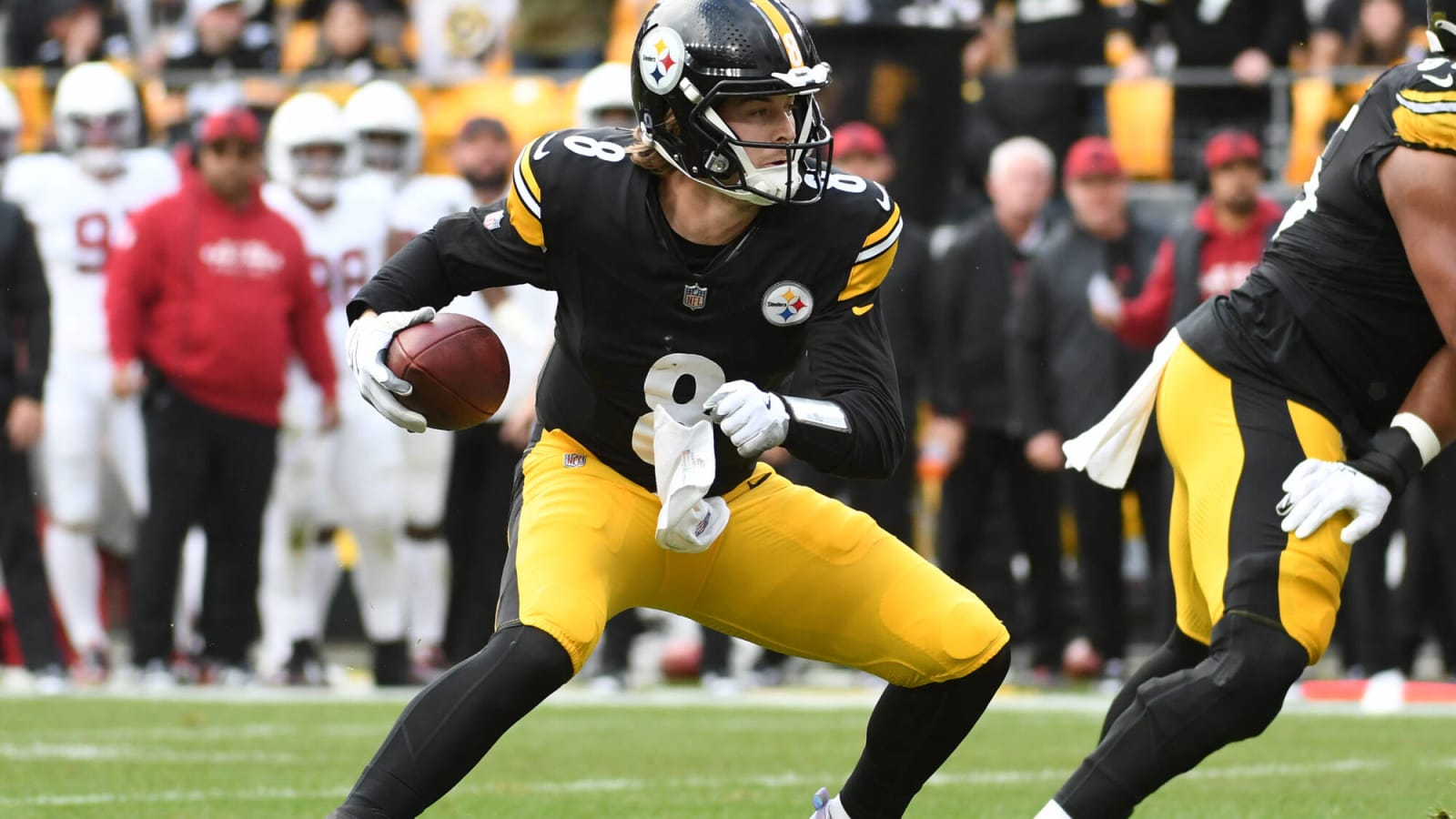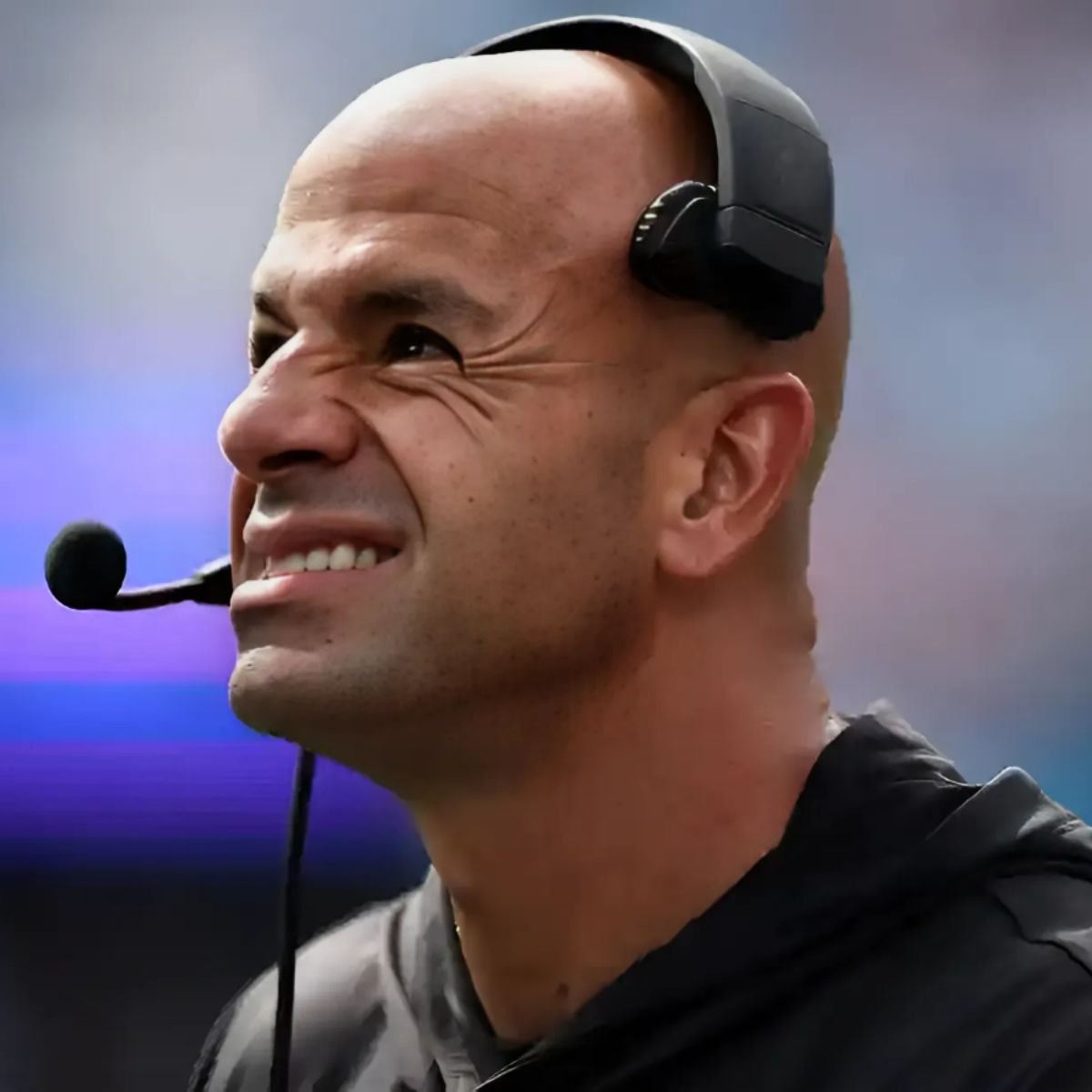There’s no debate anymore. This is Mason Rudolph’s team until further notice.
Since Rudolph took over under center, the offense has exploded for 64 points in two games. And, perhaps more importantly, the Steelers have finally played the way they envisioned to play on offense: Pound defenses with the running game, and then use the immense talent on the outside to stretch defenses when they load the box.
Why did it take so long for the Steelers to finally figure this out? I mean, Matt Canada was fired well over a month ago. Sure, there are a lot of variables to consider, including time to adapt to Eddie Faulkner and Mike Sullivan taking over the offense and multiple changes at quarterback due to injury and performance.

But, through all of this, the Steelers have found their stride with Rudolph at quarterback. And after the way he played against the Seahawks, his competent play in the win over the Bengals doesn’t look like a fluke. Rudolph’s providing something the Steelers haven’t consistently had at quarterback with either Kenny Pickett or Mitch Trubisky.
Now, there are going to be ardent, passionate defenders of Pickett. Regardless of how you feel about Rudolph or Pickett, it sure appears that no matter how the rest of this season shakes out that Trubisky will be gone. But, Mike Tomlin sticking with Rudolph for the time being is 100% the right decision in terms of trying to win now.
For those concerned about how this decision impacts Pickett’s future as the Steelers’ franchise quarterback, there remains valid reason to be concerned that Pickett just isn’t the guy. And this isn’t about how a No. 3 quarterback has supplanted him as the starter. It’s about actual football traits that Rudolph is displaying that Pickett hasn’t.
The biggest trait that sticks out like a sore thumb is poise in the pocket. A quarterback cannot have a successful career in this league without the ability to make throws from the pocket on a consistent basis. Even for some of the game’s most mobile quarterbacks, such as Michael Vick and Lamar Jackson, they’ve always been at their best — Vick especially in his days with the Eagles — when they are able to make throws while standing tall in the pocket, and then use their legs to gash defenses when they are forced to drop more into coverage.
In both games he’s played, Rudolph has made a variety of throws from standing tall in the pocket. Even when his first or second read isn’t there, he’s stuck in there, gone through his progression and made necessary throws:
This one is so simple, yet so effective. And really pay attention to the camera view from behind the play. You can see Rudolph try to let the concept develop on the left side with George Pickens and Pat Freiermuth. However, it’s not open in enough time. Rudolph senses time is running out and also the pressure coming from his blindside. He then locates his checkdown in Jaylen Warren and finds the fastest way out of the pocket: Throwing the football.
But, Rudolph isn’t only doing this to throw checkdowns. He’s also dealing with pockets collapsing in on him, but stands tall while letting the play develop. Two different plays really stood out to me from Sunday’s win over Seattle:
Rudolph knows that if the Seahawks show man coverage here, he’s got Pickens open down the field. However, that will take a few seconds to develop. While Rudolph lets the play develop, he stands tall. He’s got two blockers being pushed into his lap. Doesn’t matter. He continues to stand there, then throws to a wide open Pickens when the time is right.
Rudolph also has exceptional arm talent. Always has. That allows him to be able to stand in collapsing pockets and make throws, even when he can’t step into them. That wasn’t better exemplified than on this throw to Pickens later in the game:
I’ve got two angles here because it’s worth two different looks. Rudolph has almost no room to throw here whatsoever. This doesn’t require some sort of expert-level breakdown. This is the very definition of making a tough throw from a collapsing pocket. Rudolph knows with the talent he has at receiver, all he has to do is give them a chance. When you can repeatedly do this from the pocket, you will have success. Period.
This might be why we haven’t seen Pickett “break out” yet. Yes, he looked mighty good against the Bengals, the last time he played a full 60 minutes. However, there were still some of the same old issues on film, including his continued misses on in-breaking routes, which is really perplexing to me.
However, the biggest issue I’ve seen with Pickett is his consistent issue with bailing from pockets far too early. It’s a bad, bad habit that he has not completely shaken in nearly two NFL seasons. Not only do quarterbacks miss open receivers when they bail from pockets, but they can also unintentionally get themselves hurt by moving into pressure when they’re trying to escape it.
— DK Pittsburgh Sports (@DKPSmedia) December 24, 2023
This is a play from last year against the Raiders. If Pickett hangs in there for another second and keeps his eyes downfield, he might have seen Diontae Johnson wide open on the crossing route. It’s just far too clean of a pocket to leave early and cut the field in half. This is running because he’s comfortable running. That will not work at this level.
When I saw this play against the Browns in Week 2 …
… I was encouraged that Pickett might be improving in this area. That is a perfect example of letting a play develop and making a throw from the pocket, even if it means taking a shot. And while these type of throws have still popped up on film every now and then, so have the issues in the pocket. And now, it’s gotten him hurt twice this season.
This is as clean of a pocket a quarterback can ask for. Even for the rusher that’s coming up the middle, all Pickett has to do is shuffle to his left. Yet, Pickett spins out to his left and winds up spinning right into pressure, injuring his knee in the process. He was able to come back and play the next week, but spinning like this is completely unnecessary. A play like that could have easily caused a more serious injury.
And this wasn’t the only time Pickett spun into contact:
The spinning has to stop. The good definitely doesn’t outweigh the bad, especially when you look at this last play and look at the gaping hole he could have stepped up into on the right side. (These are the type of plays that make me gnash my teeth during film study.) Pickett’s lucky he didn’t get injured here.
Here, Pickett has to deal with some pressure when Mason Cole gets pushed back, and he decides to tuck and run, despite Calvin Austin III running wide open after moving in motion. I respect the effort to try and score with his legs, but again, quarterbacks put themselves at unnecessary risk when they’re instinct is to run early. Sit in the pocket, let the play develop, find the open receiver. Let checkdowns and running be a measure of last resort. Pickett doesn’t do that and suffers an ankle injury that — fairly or unfairly — cost him his starting job.
Here’s a good example of what I mean regarding letting plays develop instead of wanting to tuck and run so fast:
The Steelers are running a Double Post concept here:
A lot of the time, the double posts (top of the screen) are meant to clear the defense for the crosser coming back across the field. Now, Pickett picks up a first down with his legs. Sure, he moves the chains. Job well done. But, look at all of this space where Johnson is wide open:
This offense should be looking for chunks through the air — much like they are with Rudolph at quarterback. This is good-enough offense. That will do anything but strike fear into opposing defenses.
And then there are plays like these that just kind of leave me dumbfounded:
I don’t even know where to begin. Najee Harris is wide open as a checkdown. Instead, Pickett opts to go to his left — where he is most comfortable when he scrambles — and picks up only a yard with his legs.
I get it. It’s not easy to break habits, good or bad. Part of that is on coaching. But, Pickett played five years at Pitt before coming to the NFL. And, through nearly two NFL seasons, we really haven’t seen Pickett make marked progress in this one critical area from the time he entered the league through his latest appearance.
Yes, it’s just one area of his game, but it affects and waters down everything at the quarterback position. When a quarterback bails from the pocket, the designed play is dead. That relies too much on improvisation. Trust receivers to get open and linemen to block for you. When a quarterback lacks poise in the pocket, the rest of the play doesn’t matter if the quarterback moves his eyes down to the pressure in front of him rather than continue to break the play down and trust his linemen.
In two games, Rudolph’s done those things. In 25 career games, Pickett hasn’t done in consistently. Has Rudolph been perfect? No way. He’s missed open receivers and even a couple checkdowns. But, his poise in the pocket has unlocked the Steelers’ offense, even in spite of its built-in hinderances. When teams load up the box to stop the run, Rudolph makes them pay with throws downfield. When defense compensate and drop more in coverage, the Steelers rely on Harris and Warren to gash lighter boxes. It actually allows a little leeway for Rudolph to not be perfect, if that makes any sense.
This is the very definition of complementary football on offense. It’s something that’s seldom been there with Pickett. Blaming the scheme and the coaching is the easy way out. Pickett has real flaws — flaws that will end his career — that must be fixed. And maybe, just maybe, the Steelers have already ran out of patience. This offseason will tell us more about Pickett’s future.




